10 Events that Led to the Cold War
The Yalta and Potsdam Conferences (1945)
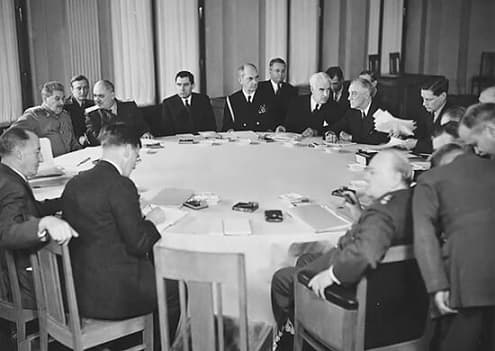
At the end of World War Two, the Allies held two important peace conferences to discuss a postwar order in Europe. But relations deteriorated between the two meetings. The political and economic systems of the capitalist USA and communist USSR were incompatible. This led to disagreements between the Allies on how to restructure Europe. And with Germany defeated, there was no longer a need for the Allies to stick together.
The atomic bomb dropped on Hiroshima (1945)

On August 6, 1945, the US dropped an atomic bomb on the Japanese city of Hiroshima. The creation and use of nuclear weapons was indeed a turning point in warfare. The fact that US President Truman did not inform Stalin of his intent to deploy nuclear weapons led to relations between the previous Allies deteriorating further. On August 20, 1945, two weeks after Hiroshima, Stalin signed a decree to accelerate the development of the Soviet nuclear weapons program.
Soviet Power in Eastern Europe (1945)
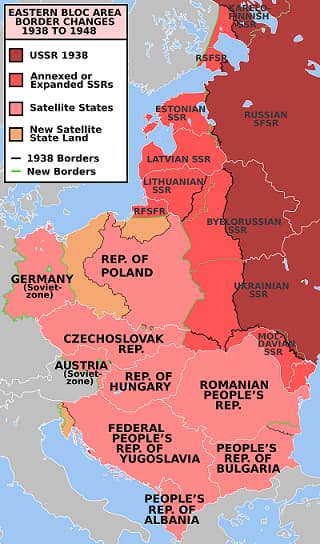
World War II caused tremendous destruction in the entire Eurasian continent from the Atlantic to the Pacific, and few countries were free from it. The Soviet blow was the most serious of these, and many industrial sites built in the 1930s were destroyed. Three years after the end of the war, there was a huge famine, more than a million people were killed, and more and more people were suffering from the fall in agricultural productivity. However, the Soviet Union was quickly restored from the destruction of the war, and by the end of the war, it became the most powerful army on earth. In the late 1940s, pro-Soviet communist parties took power in Poland, Czechoslovakia, Hungary, Romania, Yugoslavia, Albania, and Bulgaria. They all built a Stalinist dictatorship system following the example of the Soviet Union and formed the Easten Bloc.
Iron Curtain (1945)
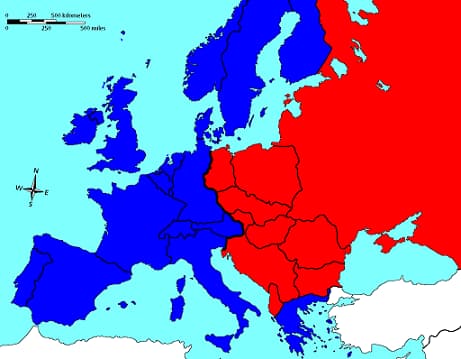
The term Iron Curtain popularized by Winston Churchill from his speech "The Sinews of Peace," addressed on March 5, 1946, is used in the West to describe the boundary line that divided Europe into two separate zones of political influence during the Cold War. This Iron Curtain included barbed wire lines separated by no man's land, minefields, and watchtowers armed with machine guns on the Soviet side. On the western side, there were many observation devices. The best-fortified, guarded, and most famous section was the Berlin wall, built 15 years after the speech.
Greek Civil War (1946)
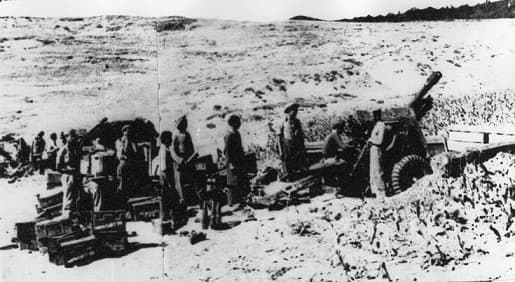
The Greek Civil War between 1946 and 1949 was the first case of a communist insurrection after the Second World War. The civil war took on an international dimension with the American intervention and the stakes of the Cold War. At this moment, the President of the United States, Harry S. Truman, signaled his willingness to "help Greece against the guerilla communist (supported by the Yugoslav partisans of NOF.) The victory of the anti-government forces led to Greece's entry into NATO in 1952 and helped define the strategic balance in the Aegean Sea and the Balkans in Europe in the postwar period.
The Truman Doctrine, Marshall Plan, Cominform (1947)
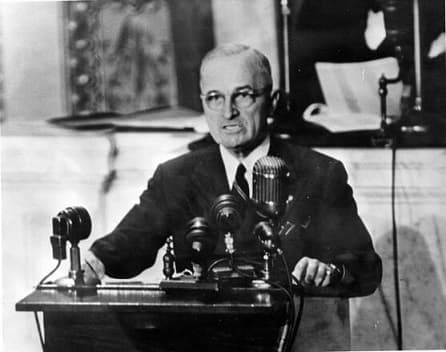
The Truman Doctrine was a foreign policy inspired by US President Harry Truman. On March 12, 1947, he declared that the United States would support Greece and Turkey with economic and military support to prevent them from surrendering the area of influence to the Soviet Union. Truman suggested that the policy would set a precedent for the US to support "free people" resistant to "totalitarian governments." The doctrine became the basis of the United States' foreign policy during the Cold War and expanded to form a policy of constraint, which is to limit the spread of communism.
The Berlin Blockade/Airlift (1948)

After World War II, Germany was occupied by the Allied forces. But in 1948, when relations between the Western powers and the eastern bloc deteriorated, the Soviet Union blocked railway, road, and canal access to Berlin's sectors under Western Control. The Soviets wanted the Westerners who occupied west Berlin to leave so they could have full control. In response to the Berlin Blockade, western powers launched the "Berlin Airlift." The Allied Air Forces, such as the Royal Air Force and the newly formed US Air Force, provided food and fuel to Berlin.
North Atlantic Treaty Organization (1949)

Following the Berlin blockade, the Western European countries and the United States recognized the possible military threat by the communist Eastern bloc led by the Soviet Union. So in 1949, the North Atlantic Treaty Organization (NATO) was established. Its initial purpose was to ensure Western Europe's security by establishing a strong link with the United States. It is a joint security arrangement by member states under which they are willing to protect each other in the event of an attack.
Federal Republic of Germany (1949)
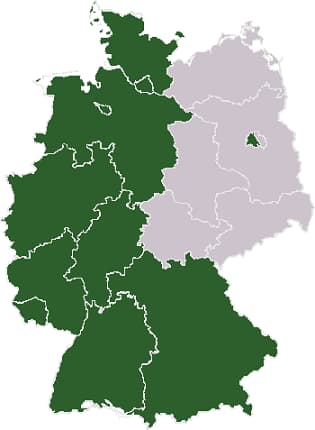
While the Soviets occupied eastern Germany, the West of Germany was shared by the British, Americans, and the French. When the Berlin blockade failed after 11 months the Federal Republic of Germany was formed from the three Allied zones of occupation.
First Lightning (1949)
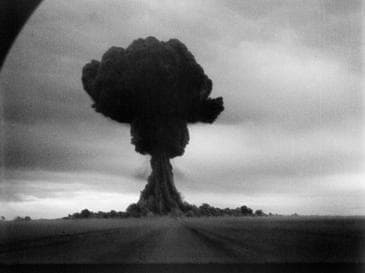
The Soviet project to develop an atomic bomb was a highly classified program launched during World War II. However, because of the intense war with Nazi Germany, the efforts were not extensive. The Soviets accelerated their program after the nuclear attack on Hiroshima and Nagasaki. Thanks to the successful transfer of German nuclear technology to the Soviet Union and the success of atomic intelligence efforts, the Soviet Union succeeded in conducting the first atomic weapon test, called ERS-1, code-named "First Lightning," in 1949. With this test's success, the Soviet Union became the second country after the United States to detonate a nuclear bomb. This led to a nuclear arms race between the two superpowers for supremacy in the event of nuclear war.
Eventually, the mutually assured destruction (MAD) doctrine was seen as a guarantee that there could be no direct clashes between the superpowers. The term describes a dynamic equilibrium in which any use of nuclear weapons by either of two opposing sides could destroy both (attacker and defender). Colloquially, "whoever shoots first, dies second."